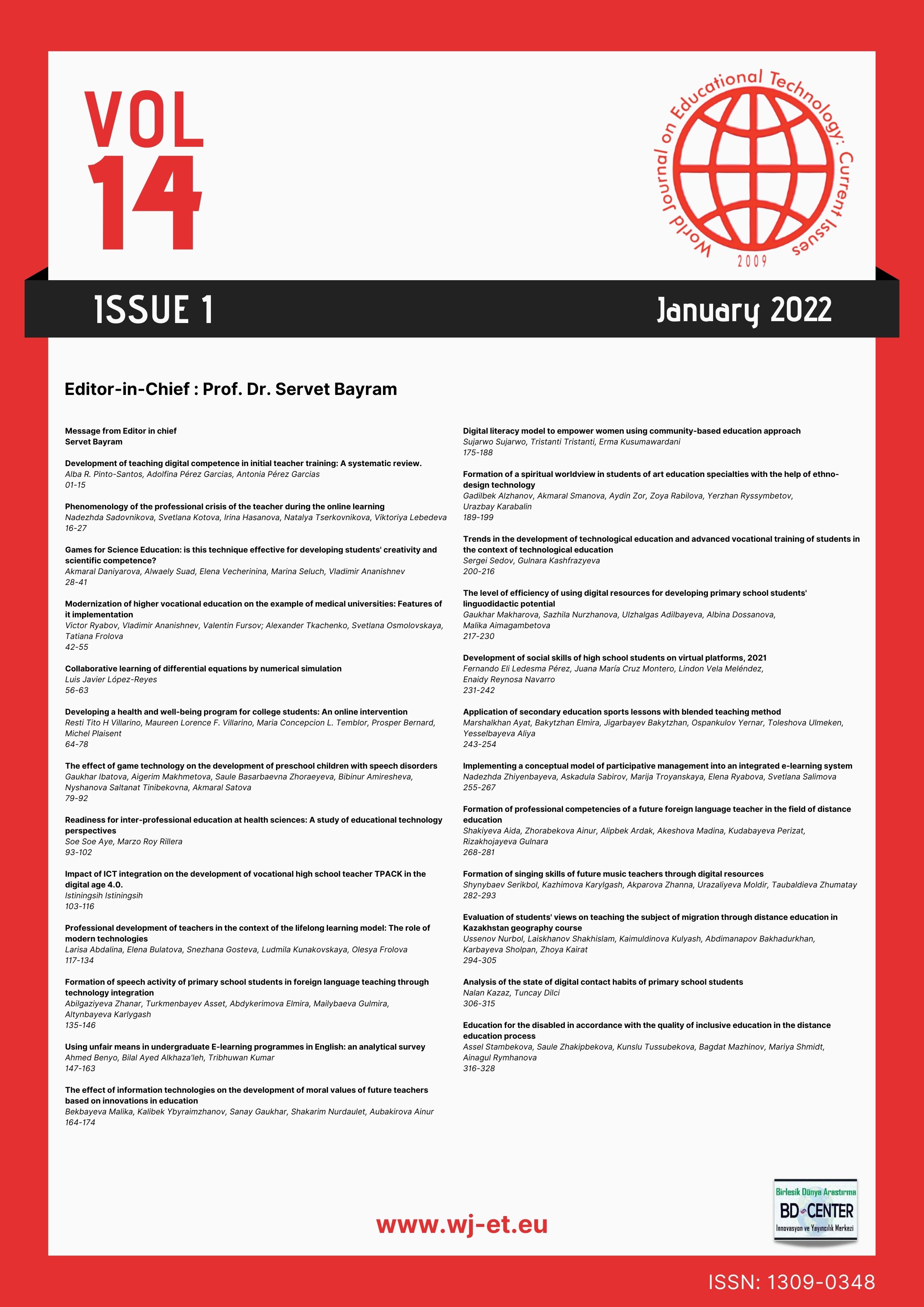Games for Science Education: is this technique effective for developing students' creativity and scientific competence?
Main Article Content
Abstract
The authors examine the pros and cons of games in the context of increasing students' creativity and scientific competence. Research materials and methods consisted of two tests. The first included the use of 7 pedagogical methods that are valid for the mental diagnosis of students: speed of thinking; method of thinking flexibility; method of determining the level of imagination and others. After the first testing, the training program included techniques for playing chess (in the classroom and online) and sand animation (in the classroom). Re-testing was carried out to assess the effectiveness of the programs. The study results showed that play activities improve the quality of student learning both in the classroom and online and enhance the functioning of many processes, including the speed and flexibility of thinking, memory capacity and attentiveness. This study demonstrates that play activities used in the educational process can play a positive role in teaching students. Further research needs to focus on studying the role of age, gender and race in play activities and determine how these factors affect performance.
Keywords: chess, cognitive processes, natural science education, pedagogical methods, performance, play activity, thinking
Downloads
Article Details

This work is licensed under a Creative Commons Attribution 4.0 International License.
World Journal on Educational Technology: Current Issues is an Open Access Journal. The copyright holder is the author/s. Licensee Birlesik Dunya Yenilik Arastirma ve Yayincilik Merkezi, North Nicosia, Cyprus. All articles can be downloaded free of charge. Articles published in the Journal are Open-Access articles distributed under CC-BY license [Attribution 4.0 International (CC BY 4.0)].
Birlesik Dunya Yenilik Arastirma ve Yayincilik Merkezi (BD-Center)is a gold open-access publisher. At the point of publication, all articles from our portfolio of journals are immediately and permanently accessible online free of charge. BD-Center articles are published under the CC-BY license [Attribution 4.0 International (CC BY 4.0)], which permits unrestricted use, distribution, and reproduction in any medium, provided the original authors and the source are credited.
